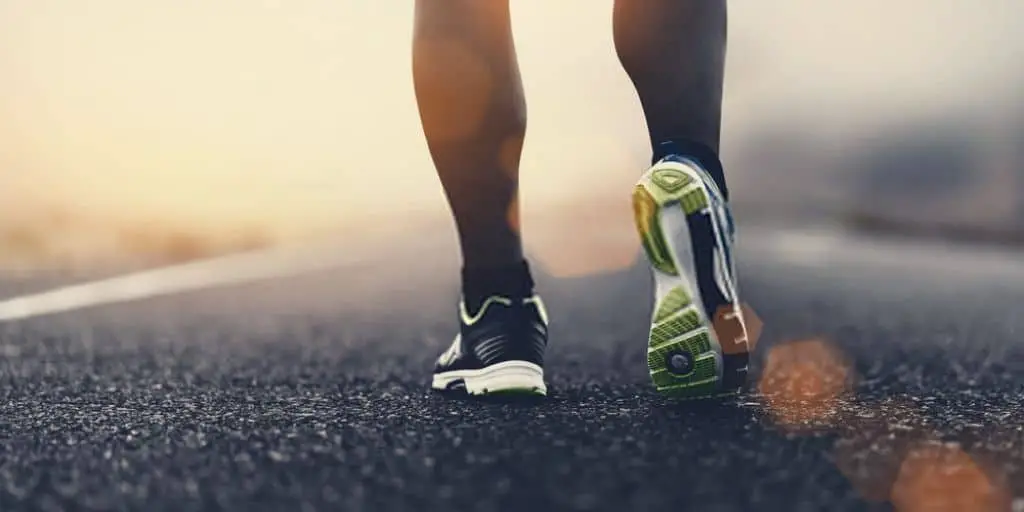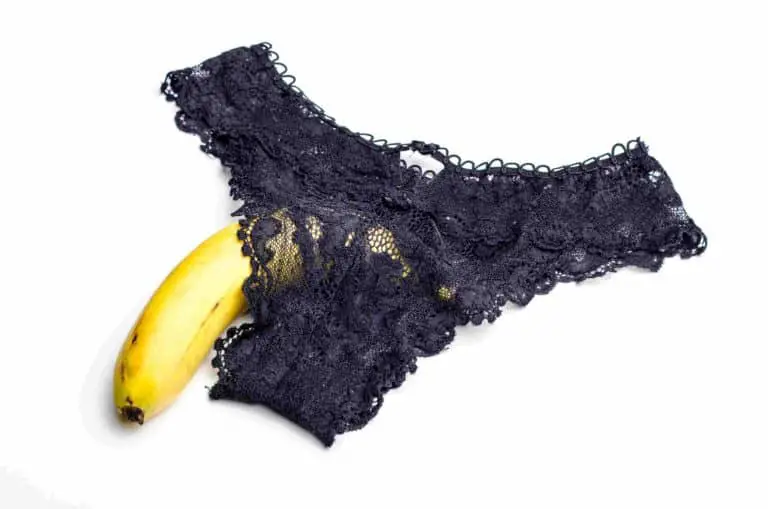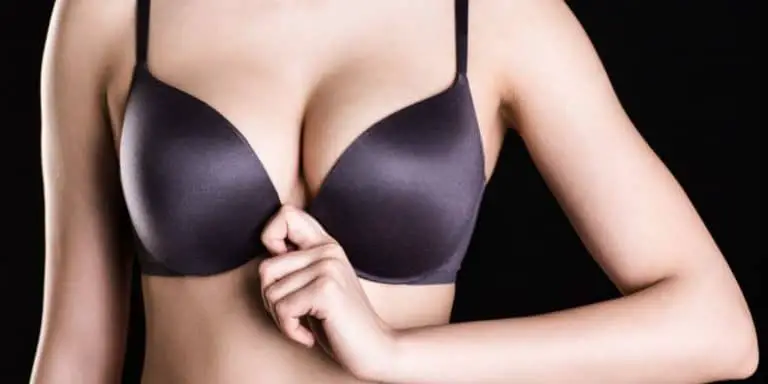The Best Shoes for Peroneal Tendonitis That Are the Most Helpful (2024 Reviews)
Peroneal tendonitis may be a common running injury but it is also a preventable one. You can choose to treat it, once the symptoms have dialed down. Simply by wearing the best shoes for peroneal tendonitis.
The condition gives rise to pain in the outside of the lower leg and foot. The peroneal tendons located in that particular area become inflamed. And that is what causes all the pain and discomfort during running.
The treatment for complete recovery involves bracing, icing, and physiotherapy. Along with avoiding to place any stress on that foot. This means running is not advisable at such times. But once the condition starts to heal and the pain to subside. You can put your best foot forward wearing one of the following running shoes I’ve reviewed below.
In A Hurry?
1.Best Shoes for Peroneal Tendonitis for Women
2.Best Shoes for Peroneal Tendonitis for Men
Best Men’s Shoes for Peroneal Tendonitis – Top 5 Reviews
5. Brooks Men’s Ghost 12 Running Shoe – Best running shoes for medium to high arches

Pros:
Outsoles are springy and responsive for extra lift.
Soft, protective cushioning installed in the insoles.
Shock absorbers in the form of the crash pad.
Cons:
A little expensive
Those looking for neutral arch support should consider these Brooks Ghost peroneal tendonitis shoes. Ghost 12 is all about optimal foot support for medium to high arches. But, to be honest, that’s not the only thing to like about this pair.
The manufacturer is Brooks after all. Meaning the brand’s exclusive BioMoGo DNA along with the DNA LOFT cushioning is a part of the deal. Both phenomenal features work together for delivering the much-needed softness underfoot. They also provide responsiveness to your feet demand during running. This feels lighter, no doubt. And that’s great for peroneal tendonitis.
Then there is the excellent segmented crash pad system. This adapts to your every footfall, no matter the kind of foot landing. The most comfortable, supportive, and smoothest ride. This is the outcome of the segmented crash pad.
On top of that, the fit is 100% secure and soft. Thanks to the well-engineered and strategically placed stretch mesh upper. A connected, energized, and cushioned experience is what Brooks Ghost successfully delivers.
4. Saucony Men’s Triumph ISO 4 Running Shoe – Best running shoes for a customized fit
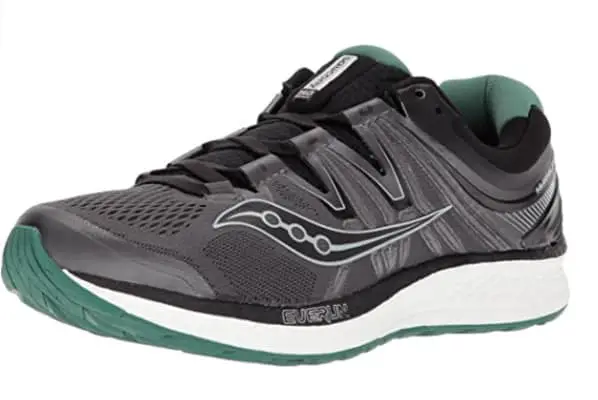
Pros:
Lightweight running shoes feature continuous cushioning.
ISOFIT stretch creates a dynamic fit.
The larger surface area in outsoles is for better force dispersion.
Cons:
The toe box is slightly narrow.
The one thing that stands out here is the redesigned ISOFIT lacing system of the Saucony shoes. This particular characteristic in the ISO 4 enables more stretch. So you can adjust the fit according to your personal preferences.
Let me also bring to your attention a piece of crucial information. That the ISOFIT lacing system adapts to the motion and shape of your feet while running. This is nothing but greats news for your healing peroneal tendonitis.
What else is worth nothing about these best shoes for peroneal tendonitis? The fact that they come with special EVERUN midsoles.And also a well-engineered mesh upper design. The former offers continuous cushioning and enhanced energy return. And the latter is to create a lightweight, dynamic lift.
Even traction and flexibility are important factors. Because of the optimal force dispersion, the TRIFLEX outsoles create. All this stability, cushioning, and support certainly provide runners with an advantage.
3. Brooks Men’s Glycerin Running Shoe – Best running shoes for shock absorption
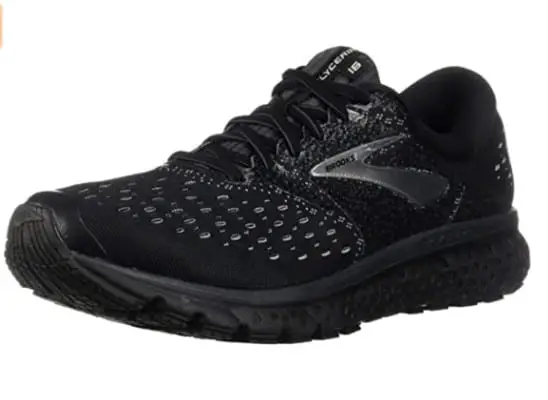
Pros:
For running, arch support is on-point.
Outsole pressure zones maximize pressure distribution.
The crash pad absorbs the most impact.
Cons:
Breathability is weak since shoes tend to heat up during runs.
The best Brooks shoes for peroneal tendonitis, hands down, is the Glycerin Running Shoe. With 3D fit print, the overlays of the pair offer all the structural support your feet demand. That too with a reduced weight!
The fit is also characterized by the stretch TPU cage. That provides a customized and enhanced fit, no doubt. Then there’s the smooth fabric lining inside. To keep your foot comfortable throughout your exercise session.
But what matters more is the super DNA, full-length midsoles. These bring into the picture maximum cushioning. They also have the capacity to enhance the energy return. And to deliver a tremendous amount of support.
A feature that adds to exceptional cushioning is the segmented crash pad. What it does is absorb the most impact. This way smoother transitions become inevitable.
For those dealing with peroneal tendonitis, there’s yet another very useful component. It’s the rounded heel structure. It aligns force in the most appropriate manner through your ankle joint. In simple words, reduced stress through the ankle joint is in the cards for you here.
2. Asics Men’s Gel-Cumulus 20 Running Shoes – Best running shoes with complete cushioning
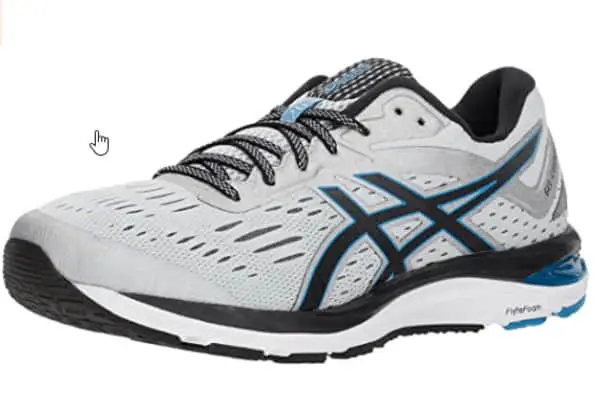
Pros:
FlyteFoam technology enables a lightweight, smooth ride.
Gel technology and ortholite sockliner add maximum cushioning.
Multidirectional stretch jacquard mesh upper.
Cons:
The shoes show signs of wear and tear soon.
Do you know that the Gel-Cumulus model has been on the market for 20 years? This is the latest version of these Asics shoes. That feature premium technology in the form of FlyteFoam. What FlyteFoam does is deliver ultralight cushioning.
FlyteFoamLyte and FlyteFoam Propel hand out complete cushioning. Along with optimal bounce back. Pair this up with the phenomenal GEL technology of Asics, and what have you? A pair of the best shoes for peroneal tendonitis that improve shock attenuation. Especially at the time of every impact!
Furthermore, the shoes come with a very useful ortholite sockliner. This is the epitome of moisture management if you ask me. But nothing beats the performance of FlyteFoam. At least as far as providing supreme bounce back is concerned.
You can count in a visually appealing appearance as well. All thanks to the jacquard mesh uppers. And you don’t have to worry about the fit either. Speaking of which, there is SPeVA insole. This makes it a point to create sufficient room in the toe area and ball girth.
Now you can run or walk the extra mile even when recovering from peroneal tendonitis.
1. New Balance Men’s 990v4 Running Shoes – Top Pick
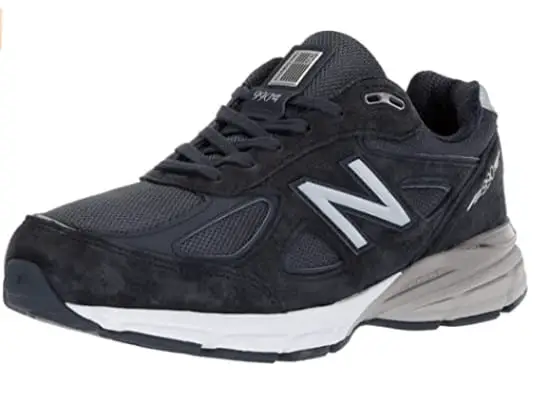
Pros:
Lightweight running shoes with excellent arch support.
Every footfall feels sufficiently cushioned.
Good for peroneal tendonitis, plantar fasciitis, etc.
Cons:
Inner soles lack shock absorption.
New Balance has designed the 990v4 to provide nothing but ultimate comfort. The shoes feature the perfect combination of stability and cushioning. The design consists of mesh uppers for breathability. And leather overlays for support.
But it’s the ENCAP technology of New Balance that steals the show here. The EVA core installed in the heel also makes a huge difference. Especially when you’re dealing with conditions like peroneal tendonitis, plantar fasciitis, etc.
Even if you’re an avid power walker. You’re highly likely to find the shoes to be more than satisfactorily supportive. Particularly around the ankles. Thanks to the double-density foam placed in the collar.
On top of that, the shoes are fairly light in weight. This makes room for effortless, pain-free, and comfortable strides during walking or running. The sole purpose of New Balance 990v4 is to maximize comfort. And the pair does that flawlessly well.
The Greatest Race | New Balance(YouTube)↓
Best Women’s Shoes for Peroneal Tendonitis – Top 5 Reviews
5.Mizuno Women’s Wave Rider 24 Running Shoe– Best running shoes for shock absorption
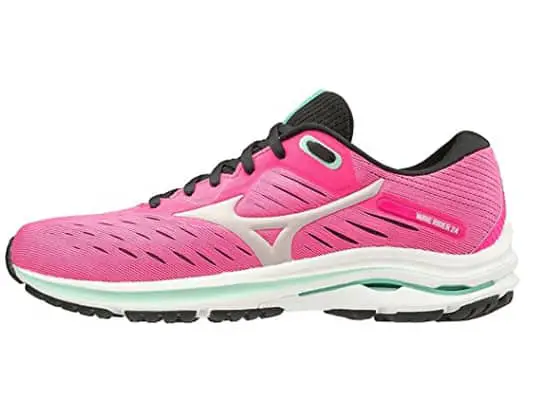
Pros:
Mizuno WAVE offers a lightweight, responsive feel.
The sock-like mesh upper is for a breathable fit.
Extra cushioning and arch support are included.
Cons:
Not for wide feet
The Mizuno Rider 24 features Mizuno Wave . No other running shoes have this technology. That means they don’t provide energy return. Or shock absorption and guidance like the current pair. And that’s the most enticing aspect of these best shoes for peroneal tendonitis.
The well-engineered, triple-zone mesh activates breathability and movement. Then there’s U4IC foam midsole to include durability and responsiveness. Speaking of a responsive feel, even the redesigned Mizuno Energy foam technology contributes to that.
Softer cushioning goes a long way, literally. Particularly when it comes to running during the recovery of peroneal tendonitis. Shock absorption, at this point, prevents any further damage. So you are indeed looking at the best women’s running shoes for peroneal tendonitis.
4.ASICS Women’s Gel-Venture 7 Trail Running Shoes–Best running shoes for maximum heel support
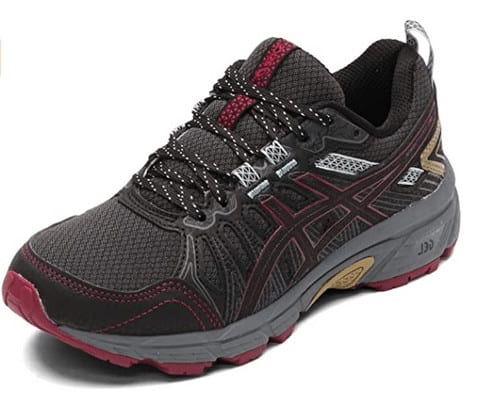
Pros:
High-abrasion rubber in outsoles for durability.
GEL cushioning for smooth transitions to midstance.
Suitable running shoes for high arches.
Cons:
Sizing runs slightly large.
The features of this particular model are very different from the Asics shoes I’ve reviewed above. For one thing, these come with trail-specific outsoles. Let me explain below.
The outsoles of Gel Venture 7 feature reversed lugs. That offer traction on every type of downhill and uphill terrain. High-abrasion rubber is strategically installed in all the critical areas. This is for enabling maximum durability.
In terms of comfort, there’s GEL cushioning in the forefoot and rearfoot. And this exceptional technology attenuates most impact during your foot transitions. For those with peroneal tendonitis, this means protection, support, and comfort. And so does the medical orthotic sock liner.
Running Shoes – Training & Injury Prevention Tips | ASICS(YouTube)↓
3.Saucony Women’s Ride 14 Running Shoe– Best casual shoes for peroneal tendonitis
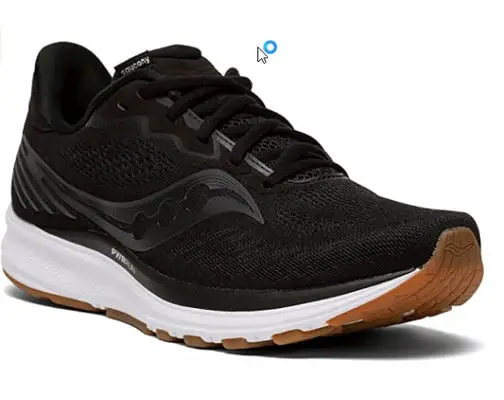
Pros:
Supportive, breathable upper overlays.
Lighter Footprint and fashionable looks
PWRRUN supportive cushioning.
Cons:
Not as wide as the older models
The Saucony Women’s Ride 14 Running Shoe is an ideal choice for daily wear as well as running. You can be a nurse who spends all day on your feet. Or an enthusiastic runner recovering from a foot condition.Like peroneal tendonitis or plantar fasciitis. Whatever the case, you’re bound to fall in love.
The shoes feature technology that can withstand tough applications. The trademark feel, performance, and fit of Saucony are unbeatable. Particularly when it comes to running and walking shoes. So the current pair is no exception.
The well-engineered system maximizes performance during running. The advanced technology of the shoes in the form of the Balanced PWRRUN cushioning is the best in my opinion. Because it delivers sole-based stability.Along with an exceptional cushioning system.
The shoes, no doubt, feel stabilizing and well-cushioned. Plus, the toe box offers the perfect fit even for those with bunions.
In addition, Saucony Women’s Guide 14 Running Shoe is also a good option, these two shoes resemble each other quite closely.
2. New Balance Women’s Fresh Foam Hierro V6 Trail Running Shoe-Best trail running shoes for peroneal tendonitis
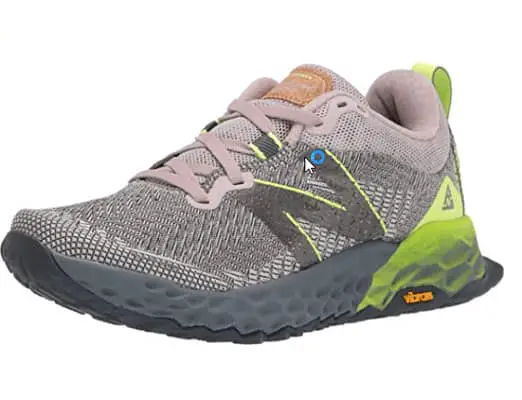
Pros:
EVA midsoles hug the feet the most comfortably.
Impact-reducing crash pad included.
Suitable for wide feet.
Cons:
Arch support is a bit lacking.
Just one look at the plush, padded collar and branding details. And you know how high-quality, durable, and high-performing the current pair is. The manufacturer is none other than New Balance. You should expect nothing but greatness here.
The EVA midsoles are the highlight of the show. These are injection molded to maximize comfort. Here’s something that makes matters even more comfortable for peroneal tendonitis. The heel features a crash pad. And what this does is reduce impact.
As for the outsoles, they don’t falter when it comes to delivering traction, they have the grip you would need for trails and such. Needless to say, the shoes are perfect for not only technical dirt trails. But also for gravel runs. Stable feet and more cushioning are the high points you simply cannot disregard in this case.
(Youtube)New Balance Hierro V6 Review // Freshfoam & Fresh Aesthetics↓
1.ASICS Women’s Gel-Nimbus 23 Running Shoes–Top Pick
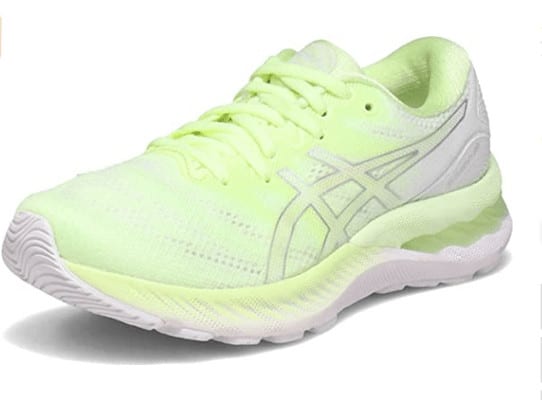
Pros:
Incredibly comfy right out of the box, thus no break-in.
GEL cushioning attenuates shock.
Seamless construction.
Cons:
The toe box is not roomy enough.
The best of the lot is Gel-Nimbus 23 by Asics once again.
The list of the best shoes for peroneal tendonitis would be incomplete without an Asics creation. So here’s the brand’s Gel Nimbus 23, which features everything right and comfortable. Such as the FluidFit upper technology.
The upper combines stretch that’s multidirectional stretch reinforcements. These adapt to your foot for creating a customized fit. Then there’s FluidRide for cushioning, bounce back, durability, and reduced weight.
Moving on to the forefoot and rearfoot, these areas are equipped with GEL cushioning. The best kind that absorbs the most impact. It also enables movement, no matter the surface. Smooth foot transitions are activated throughout your gait cycle.
And last but certainly not least. The heel counter creates the most supportive heel-fitting environment. So your peroneal tendonitis gets enough support and protection to heal completely.
In fact, the pair features the best shoe insert for peroneal tendonitis.
Best Shoes for Peroneal Tendonitis – Buying Guide
Peroneal Tendonitis – What Is It?
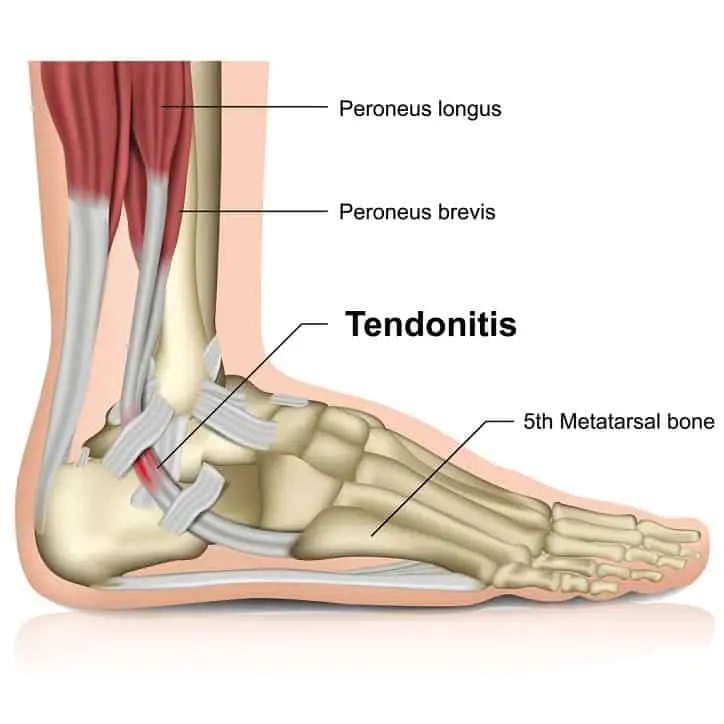
Each foot consists of 2 tendons placed next to one another. These are located right behind the outside part of your ankle bone. The first tendon is connected to the outer midfoot region. And the second one connects to the inner part of your arch.
What do these tendons do exactly? They protect your foot from potential injuries. The tendons even help in stabilizing your foot when walking or running. So when the 2 tendons get damaged, the condition of peroneal tendonitis takes place.
Tiny micro-tears create inflammation. And that, in turn, causes swelling and pain. This is how simple activities like walking, running, and even standing become difficult. The pain persists in the back area of your foot. And if untreated, it can get worse.
Peroneal Tendonitis – Causes
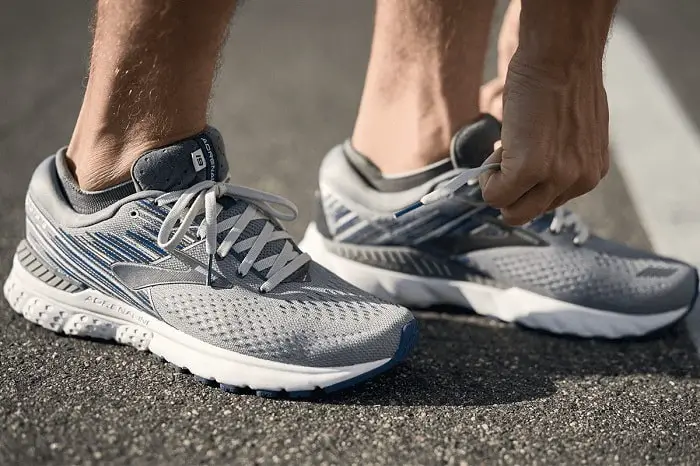
1. Overuse
This is the most common cause of peroneal tendonitis. When you overuse your tendons, it makes way for tears and over-stretching. Micro-tears occur due to high-impact workouts like running or playing sports.
But you can avoid the possibility of overusing your tendons. All you have to do is stretch your foot. That is before starting any high-intensity or low-intensity activity. It’s very important to stretch or warm-up before performing movements.
2. Trauma
Severe tears are often caused because of some traumatic injury. More often than not, this includes landing very hard on the foot. The tears can be large in size too. And if that’s the case, then you’re looking at long-term chronic pain.
3. Abnormal Structure of the Foot
Abnormal here implies high arches or flat feet. If your foot structure is anything like that. Then muscular tension is only inevitable. This is how those with flat feet or high arches are more likely to suffer from peroneal tendonitis.
4. Medical Conditions
What medical conditions increase the chances of the development of peroneal tendonitis? There’s rheumatoid arthritis. Along with spondyloarthropathy. These medical conditions are also very likely to give rise to other foot-related concerns. Such as tibial tendonitis and Achilles tendonitis.
Peroneal Tendonitis – Symptoms
The symptoms, obviously, depend on how severe the injury is. But here are the most common signs associated with the condition…
- Pain when you turn your foot.
- Ankle instability for supporting your body weight.
- Pain in the back of your ankle, particularly during activity.
- Ankle or foot swelling.
- The back of the foot and ankle become warm to touch.
Features to Consider When Buying the Best Shoes for Peroneal Tendonitis
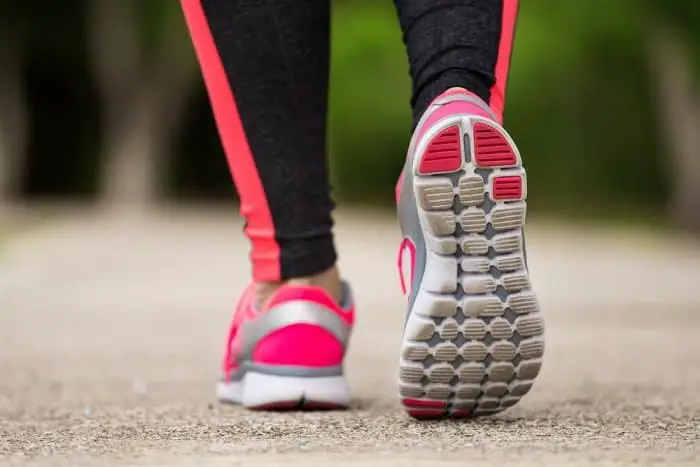
#1 Shock Absorption
When the shoes are equipped with cushioning that absorbs most impact. It goes a long way in reducing pressure during running or even walking.
In most shoes, shock absorption takes the form of air or gel pockets. The gel version is more effective. Hence, more expensive in comparison to air cushioning.
Another feature responsible for shock absorption is padding in the heel. This minimizes the amount of pressure falling on your heels.
#2 Flexibility and Weight
Lightweight shoes, needless to say, are a better choice for running and walking. And so is a pair constructed using flexible uppers. The goal is to wear shoes that minimize stress. Especially around your tendons and ankles to prevent injuries.
#3 Support
What features maximize support in running shoes for peroneal tendonitis? To be the most specific, these include extra padding. Along with insoles that have the ability to mold to the shape of your feet.
#4 Cushioning
The greater part of your body weight is transferred to the ankles. And tendons start from the ankles and extend till the midsection. So it’s very important for your shoes to offer adequate midfoot and heel cushioning. Especially when recovering from peroneal tendonitis.
This cushioning consists of rubber installed in the insoles and along the sides. And it does an excellent job of absorbing and distributing the body weight, your ankles are compelled to tolerate.
So, as a result, the tension and stress in the heel and midfoot drastically reduce. And with it, so does the strain, pain, and inflammation associated with peroneal tendonitis.
Commonly Asked Questions About Peroneal Tendonitis Treatment
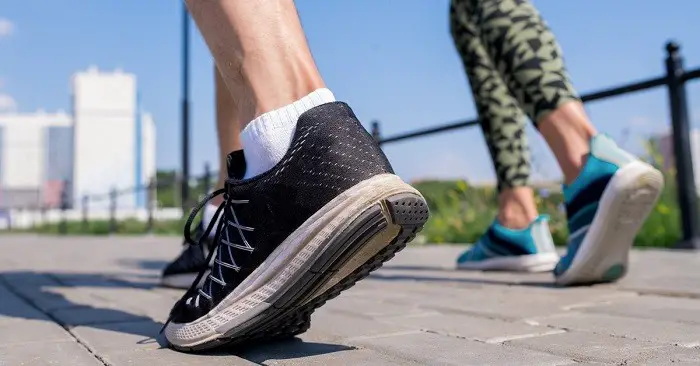
Q1. How to heal the condition quickly?
If you want to accelerate the healing process, then immobilization is a must. That means keeping your strained ankle and foot from moving. Even physical therapy has proven to minimize swelling and speed up healing.
Q2. How to treat peroneal tendonitis symptoms?
You can start by applying an ice pack every 4 hours for around 10-15 minutes each time.
Make sure your ankle is elevated using a cushion or pillow. This enables increased blood circulation for reducing inflammation. And promoting faster healing.
Even taping the foot and ankle provides protection and support.
And lastly, there are non-steroidal anti-inflammatory drugs. But for this, you’ll have to pay a visit to your doctor. They help a great deal when it comes to relieving pain and inflammation. Along with accelerating recovery.
Q3. Can I work out with peroneal tendonitis?
Exercising with peroneal tendonitis is highly not recommended. In fact, it might just make matters worse. Thus, leading to more pain and swelling. Instead, go for controlled stretching.
What stretching does is boost blood collagen and improve muscle fiber strength. In short, it facilitates quick recovery. Stretching even prevents further injury. As it improves muscle flexibility while also reducing the symptoms.
The EndNote
Running, no doubt is a high-intensity movement. It affects your ankles and feet, no two ways about that either. So it’s very important to wear running shoes that support, cushion, and protect your ankles and feet. And this becomes an obligation when recovering from foot conditions like peroneal tendonitis.
So if you’re an avid runner, then you should not neglect to wear the best shoes for peroneal tendonitis.
- The best of the lot for men is the New Balance Men’s 990v4 Running Shoes.
- And for women, it’s the ASICS Women’s Gel-Nimbus 23 Running Shoes.
.
These two pairs help in maintaining a proper technique and form for running. And for preventing the recurrence of peroneal tendonitis. Or any other foot or ankle injury.
SEE MORE:
Best Shoes for Peroneal Tendonitis – Top 5 Choices for Men: Comparison Table
| NAME | RATING | MATERIAL | BEST FEATURE |
|---|---|---|---|
| Brooks Men’s Ghost 11 Running Shoe | #5 | Mesh and synthetic upper | BioMoGo DNA for responsiveness |
| Saucony Men’s Triumph ISO 4 Running Shoe | #4 | Mesh and synthetic upper | Dynamic ISOFIT lacing system |
| Brooks Men’s Glycerin 14 Running Shoe | #3 | Mesh and synthetic upper | Crash pad for shock absorption |
| Asics Men’s Gel-Cumulus 20 Running Shoes | #2 | Jacquard mesh upper | FlyteFoam for cushioning |
| New Balance Men’s 990v4 Running Shoes | #1 – Editor’s Pick | Mesh upper with leather overlays | ENCAP technology for comfort |
Best Shoes for Peroneal Tendonitis – Top 5 Choices for Women: Comparison Table
| NAME | RATING | MATERIAL | BEST FEATURE |
|---|---|---|---|
| Mizuno Women’s Wave Rider 21 Running Shoes | #5 | Mesh and synthetic upper | CLOUDWAVE for shock absorption |
| New Balance Women’s WT610V5 Trail Shoe | #4 | Mesh and synthetic upper | EVA midsoles for comfort |
| Saucony Women’s Cohesion 11 Running Shoe | #3 | Textile and synthetic | Grid supportive cushioning |
| Asics Women’s Gel Nimbus 18 Running Shoe | #2 | Synthetic | Heel clutching system for support |
| Asics Women’s Gel Venture 6 Running Shoes | #1 – Editor’s Choice | Synthetic | Trail-specific outsoles for traction |

